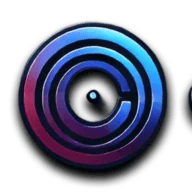.jpg)
Certified Kaizen Foundation & Practitioner Course
Course Description
The Certified Kaizen Foundation & Practitioner Course equips professionals with comprehensive knowledge and hands-on skills to implement and lead Kaizen initiatives. This program blends traditional lean thinking with modern problem-solving tools, promoting a culture of continuous improvement across business functions. From foundational philosophy to advanced tools like Value Stream Mapping and DMAIC, this course is designed to drive impactful change, optimize processes, and increase team engagement.
What You’ll Learn
By the end of this course, participants will be able to:
-
Understand and apply Kaizen principles in diverse industries
-
Facilitate and manage Kaizen events effectively
-
Use process mapping and quality tools to identify inefficiencies
-
Design and execute improvement roadmaps using VSM and Lean tools
-
Integrate Kaizen with DMAIC and change management frameworks
-
Build high-performing improvement teams and sustain results
-
Identify and eliminate various forms of waste in processes
-
Utilize metrics, dashboards, and interactive tools for ongoing success
Course Curriculum
-
Introduction to Kaizen
-
Understanding the Kaizen Philosophy and Core Values
-
Real-World Applications of Kaizen in Organizations
-
Key Considerations for Sustained Implementation
-
Common Challenges and Strategic Solutions
-
-
Developing a Kaizen Strategy
-
The Role of Leadership in Continuous Improvement
-
Managing Organizational Change for Kaizen Culture
-
Aligning Business Goals with Improvement Initiatives
-
Tools for Strategy Deployment (Hoshin Kanri)
-
Defining Project Scope and Selecting Teams
-
Setting Performance Indicators for Success
-
-
Essential Kaizen Tools
-
Introduction to Kaizen-Based Quality Tools
-
7 QC Tools for Problem Solving
-
Using Check Sheets, Pareto Charts, Histograms, and Scatter Diagrams
-
Process Mapping and Fishbone Diagrams (Cause & Effect)
-
Introduction to Statistical Process Control (SPC) Charts
-
-
Conducting a Kaizen Event
-
Preparing for a Kaizen Blitz
-
Structuring a Successful Kaizen Event Week
-
Key Roles and Responsibilities within a Kaizen Team
-
Event Planning, Scheduling, and Facilitation
-
-
Identifying and Eliminating Waste
-
Overview of the 8 Types of Waste (Including Non-Utilized Talent)
-
Practical Exercises for Waste Identification
-
Real-Life Scenarios of Waste Elimination in Business Processes
-
-
Advanced Kaizen Applications
-
Integrating Kaizen with Change Management
-
Cultural Adaptation for Sustained Improvement
-
Introduction to Value Stream Mapping (VSM)
-
Project Selection and Roadmap Development
-
Kaizen Leadership Skills and Event Management
-
-
Deep Dive into Kaizen Philosophy
-
Origins and Evolution of Kaizen (Toyota’s Approach)
-
The Difference Between Continuous and Breakthrough Improvements
-
Kaizen vs. Kaizen Blitz – When and How to Use Each
-
The Flow of the Kaizen Process
-
-
Designing Effective Kaizen Events
-
Key Characteristics of High-Impact Events
-
Event Selection Criteria and Risk Considerations
-
Solutions Driven Through Event-Based Collaboration
-
Kaizen Limitations and When to Use Alternatives
-
-
Integration with DMAIC and Lean
-
Linking Kaizen with the DMAIC Framework
-
Comparing Traditional and Agile Methodologies
-
Leveraging Lean Tools for Continuous Process Improvement
-
Understanding Kaizen ISFs (Internal Success Factors)
-
-
Process Fundamentals
-
Defining Business Processes and Their Classifications
-
Visual Mapping and Process Standardization
-
Understanding SIPOC Models for Process Clarity
-
-
Creating Process Maps
-
Levels of Process Mapping (Macro, Mid, Micro)
-
Swim Lane Diagrams for Role Clarity
-
SOP Development and On-the-Ground Instructions (OTGIs)
-
Data Collection Planning and Metrics Selection
-
-
Introduction to Value Stream Mapping (VSM)
-
Purpose and Benefits of VSM
-
Manufacturing vs. Transactional Streams
-
Creating “As-Is” Maps and Analyzing Flow
-
Understanding Key VSM Symbols and Blocks
-
-
VSM Metrics and Performance Indicators
-
Interpreting Key Metrics (e.g., RTY, Takt Time, Lead Time)
-
Kaizen Bursts and Identifying Improvement Opportunities
-
Establishing Baseline and “To-Be” Processes
-
Best Practices for Documentation and Follow-Up
-
-
Building Interactive VSMs
-
Digital and Interactive Process Mapping Tools
-
Creating Real-Time Collaborative Maps
-
Linking Process Elements to KPIs
-
Service Flow Visualization
-
-
Assembling the Right Team
-
Roles and Attributes of High-Performance Kaizen Teams
-
Selecting SMEs, Recorders, and Support Staff
-
Balancing Skills and Experience
-
Defining Clear Boundaries and SIPOC Context
-
-
Meetings, Charters & Training
-
Structuring the Kickoff Meeting
-
Drafting a Comprehensive Kaizen Charter
-
Training Objectives and Learning Path
-
Event Ground Rules and Basecamp Logistics
-
-
Kaizen Implementation Roadmap
-
Implementation Strategy and Planning
-
Timeline Estimation and Prioritization
-
Defining Viable, Low-Cost Solutions (No Moon Shots)
-
Seven-Step Structured Problem-Solving Approach
-
-
Addressing Transactional Waste
-
Recognizing and Reducing Non-Value-Added Activities
-
Dealing with Incomplete, Inaccurate, and Redundant Data
-
Overcoming Communication Gaps in Office Workflows
-
Responsibilities of Key Stakeholders in Waste Reduction
-
-
Daily Review & Sustained Results
-
Conducting Effective Daily Stand-Ups
-
Sponsor and Champion Engagement
-
Post-Event Follow-Up and 30-Day Action Plans
-
Checklists and Scorecards for Tracking Progress
-

Chronolearn
DeveloperI am a web developer with a vast array of knowledge in many different front end and back end languages, responsive frameworks, databases, and best code practices
| Title | From Date | To Date | Cost |
|---|---|---|---|
| Upcoming Classes | 2025-05-24 | 2025-05-25 | 1999 |
| Upcoming Classes | 2025-06-28 | 2025-06-29 | 1999 |
| Upcoming Classes | 2025-07-26 | 2025-07-27 | 1999 |





